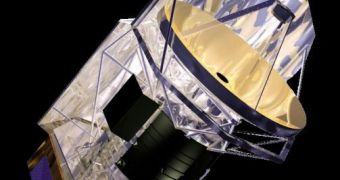The golden age of discovery astronomy is entering now could lead to major breakthroughs and answers to fundamental cosmology questions, like the origin of the galaxies, probably the most important of all. New telescopes and instruments, soon to be deployed could observe distant events early in the life of the universe within the next decade or even sooner.
One of these new instruments is the Herschel Space Observatory (HSO), a future telescope of the European Space Agency, to be launched in 2008 aboard an Ariane 5 rocket. This will be the first space observatory to cover the full far infrared and submillimeter waveband and its telescope will have the largest mirror ever deployed in space, three and a half meters in diameter.
This tool will have as primary mission objectives the study of galaxy formation processes in the universe and their evolution, the birth of stars, as well as the chemical composition of the atmospheres and surfaces of extrasolar planets, satellites and comets.
With this ?1 billion instrument, the European Science Foundation (ESF) hopes to solve the question of how galaxies form. So far, the process is known to involve the collapse of dust and gas areas, under the action of gravity, into clumps with densities rising to level high enough to trigger nuclear fusion.
However, the details of this process are still unknown, because the phenomenon has been shielded from the keen eyes of current telescopes by clouds of dust that absorb visible light. The new telescope will detect visible light re-emitted by this dust, which it will absorb at longer wavelengths, with sufficient sensitivity to clear up the image of galaxies during their formation.
"There will be many surprises, as this is still a relatively uncharted wavelength range," said Eelco van Kampen, chair of the ESF Research Conference The Origin of Galaxies, about future breakthroughs of Herschel, the largest space telescope of its kind when launched.

 14 DAY TRIAL //
14 DAY TRIAL //